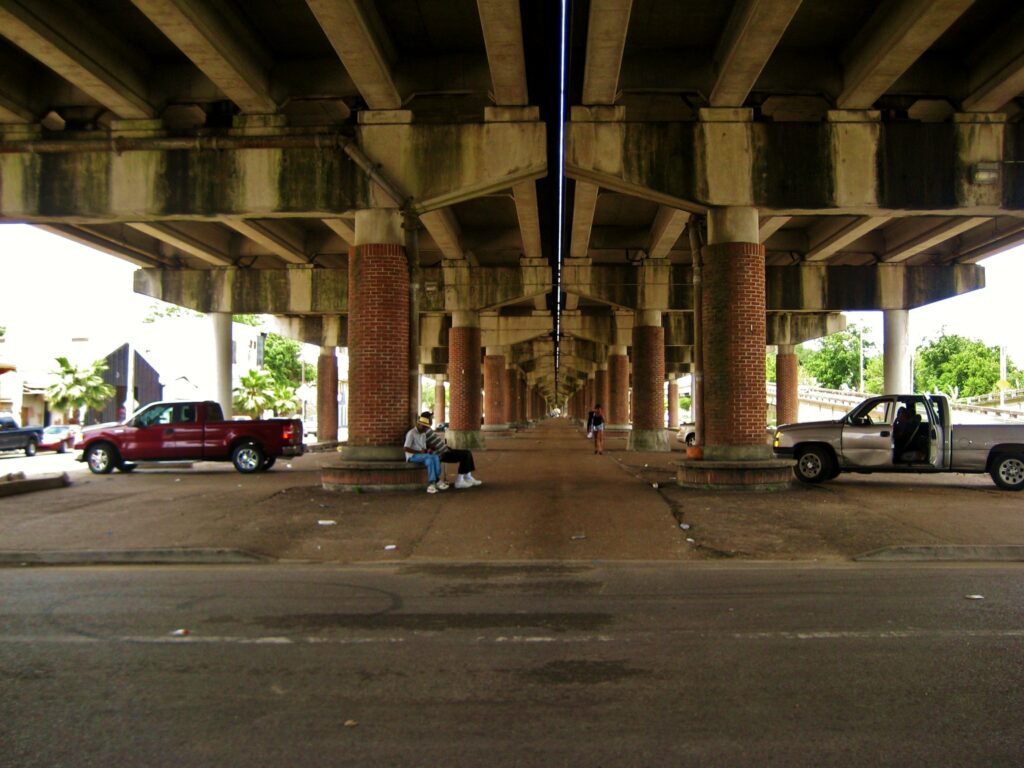Reconnecting Communities: Initiating restorative transportation justice
Much of the work of smart transportation focuses on playing defense against divisive infrastructure projects that would make travel more difficult. Now, communities and advocates have a small but real opportunity to go on offense and remove or mitigate harmful stretches of transportation infrastructure.

Program overview
On June 30, 2022, the US Department of Transportation (USDOT) released a notice of funding opportunity (NOFO) for the Reconnecting Communities competitive grant program (RCP). States and localities can apply for funding to remove, retrofit, mitigate, or replace an existing expressway, viaduct, principal arterial, transit or rail line, gas pipeline, intermodal port, or an airport that creates barriers to communities. They can also apply for funding to plan such projects.
States and cities have always been allowed to use federal funds for reconnecting communities, but these funds can be used for a variety of purposes, and more often than not, decision makers have opted to build new infrastructure instead of repairing past mistakes. The RCP is unique because it cannot be used for other purposes—it can only be used for the narrow purpose of undoing or mitigating the damage caused by divisive infrastructure, giving advocates a great opportunity to rally local support for reconnection projects.
Removing harmful road infrastructure is important, but so is making space for the community to design what replaces those roads. Grants that include equitable design, community partnerships, intermodal mobility benefits, and anti-displacement strategies are most likely to be selected by USDOT. Full details on these criteria are included in the NOFO.
A tested solution
Projects to reconnect communities are not a new idea. During the interstate highway boom of the 1960s, the city of Rochester, New York constructed a network of highways throughout the city, including the Inner Loop, which destroyed much of the heart of the city. Like in most American cities, this destruction primarily targeted black neighborhoods.
In 2017, local officials in Rochester decided to try to make things right. They used a combination of federal and local money to convert two-thirds of a mile of Inner Loop East—12 lanes of expressway and frontage road—into one two-lane low-speed street, eliminating bridges and retaining walls while freeing up six acres of land for new development.
The project was a massive success for both the city budget and local development. It produced $229 million in economic development from only $23.6 million in public investment. It led to a 50 percent increase in walking and 60 percent increase in biking in the surrounding area. On the new land freed up by removing the highway, developers have since built commercial space and 534 new housing units, about half of which are affordable. The removal of Inner Loop East was so successful that the city is now planning to remove another stretch: Inner Loop North.
Rochester is not alone. Syracuse, New York is planning to convert a 1.4-mile stretch of I-81 through its downtown into a “community grid.” Near downtown New Orleans, residents of the historically black Tremé neighborhood have battled for years to remove the stretch of Claiborne Expressway (I-10) that runs through their community (pictured above). The Freeway Fighters Network includes even more communities looking to cap, remove, or even prevent divisive infrastructure.
Every city in the U.S. can benefit from highway removal because every city has its own history of communities being demolished and isolated due to roadway construction. The RCP provides an opportunity for advocates and officials alike to listen to marginalized communities and apply for funding to implement what they need. Rochester and Syracuse can be used as models, but every community will have the flexibility to find an approach that meets their specific needs.
The program’s limitations
The RCP can fund important, restorative projects, but its resources were severely limited by Congress. The program only has $1 billion to give out over the next five years. So this year, USDOT can only award $195 million in grants. For capital construction grants, the minimum grant is $5 million, and USDOT anticipates grants ranging from $5 million to $100 million apiece. So while we do not know the exact number of grants that will be awarded this year, it will likely only be a handful. Planning grants will be awarded at a maximum of $2 million.
USDOT knows funding is tight, so they will designate projects that are well deserving but need more than they can offer as “Reconnecting Extra.” When projects with the Reconnecting Extra status submit future applications for competitive grants like RAISE, they will receive favorable consideration from USDOT. Likewise, if the project is pursuing a TIFIA or a RRIF loan, USDOT will work to consider additional assistance permissible under those loan programs.
We would like to see this program funded more substantially, but the president’s budget and current Congressional Appropriations bill for fiscal year 2023 only allocated the bare minimum. For now, advocates will need to fight hard to make sure their city is selected and demand states and cities make proper use of other federal funds to close the gap.
Transportation for America members have access to exclusive resources that provide further detail on this topic. To view memos and other members-only resources, visit the Member Hub located at t4america.org/members. (Search “Member Hub” in your inbox for the password, or new members can reach out to chris.rall@t4america.org for login details.) Learn more about membership at t4america.org/membership.




















